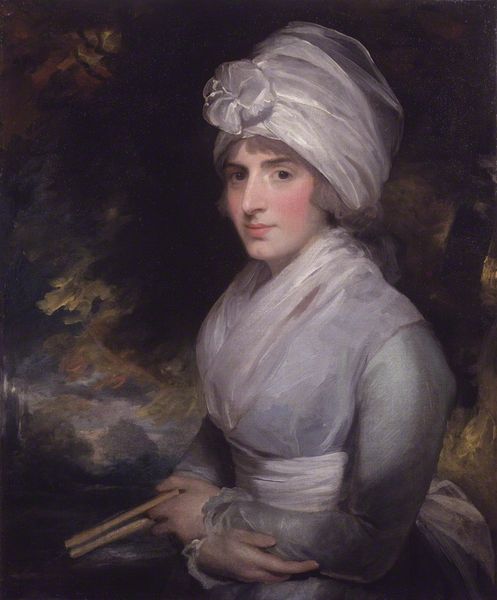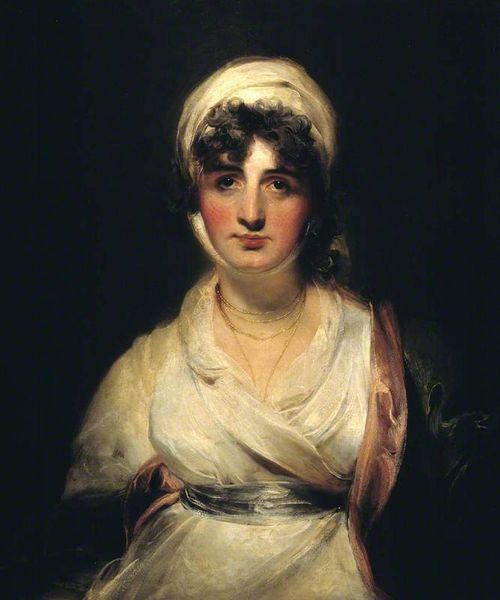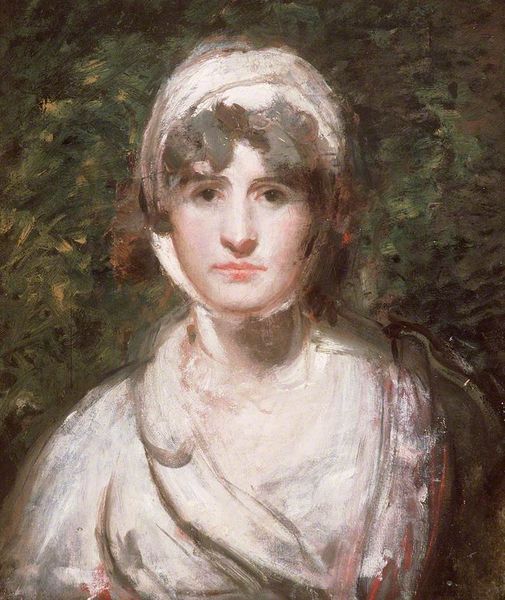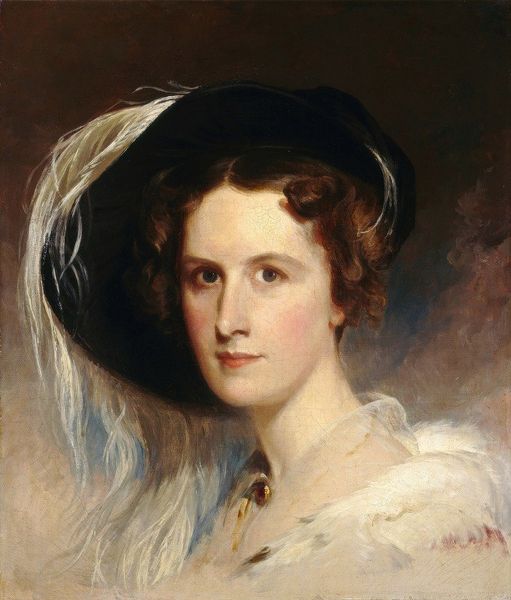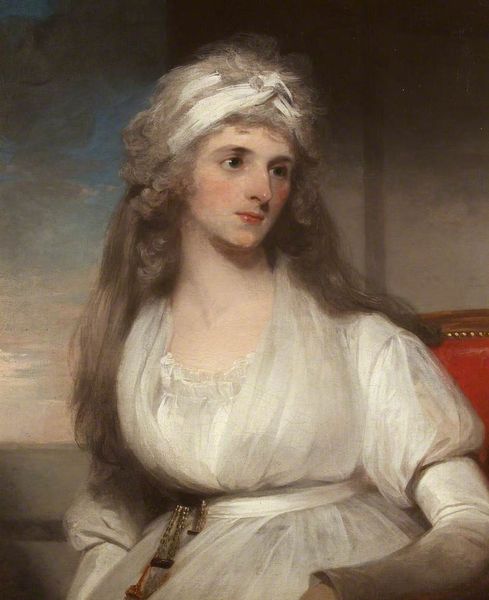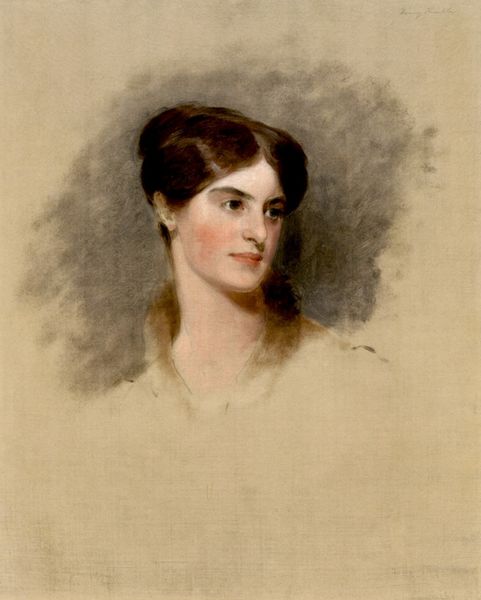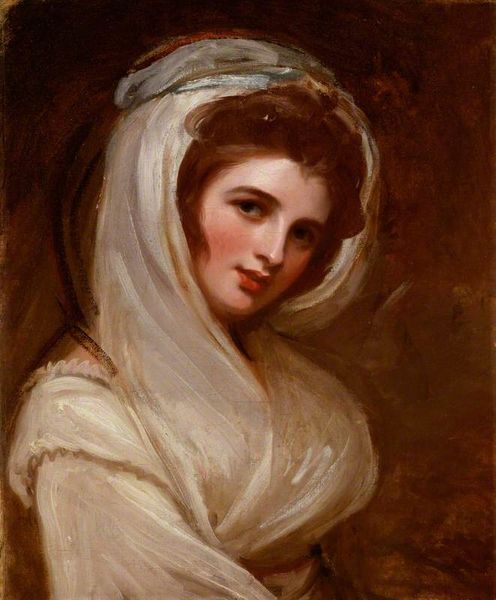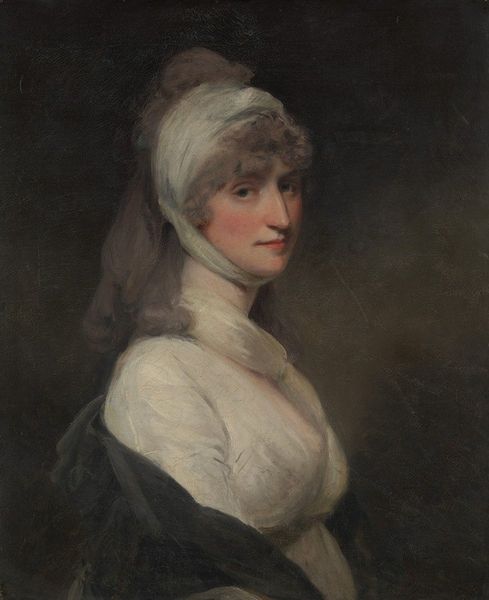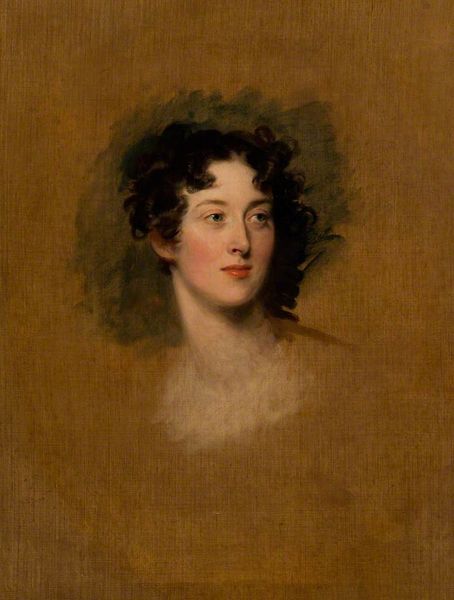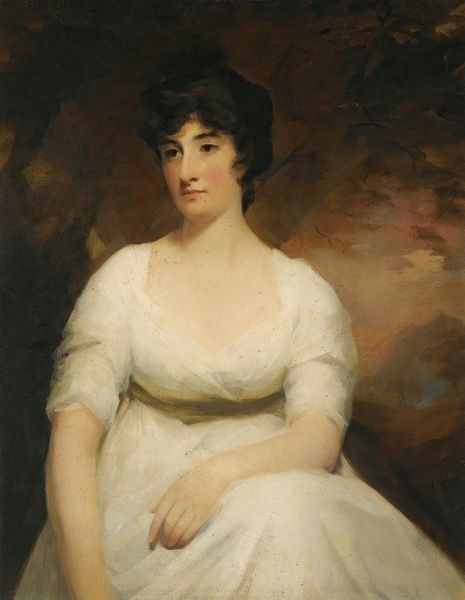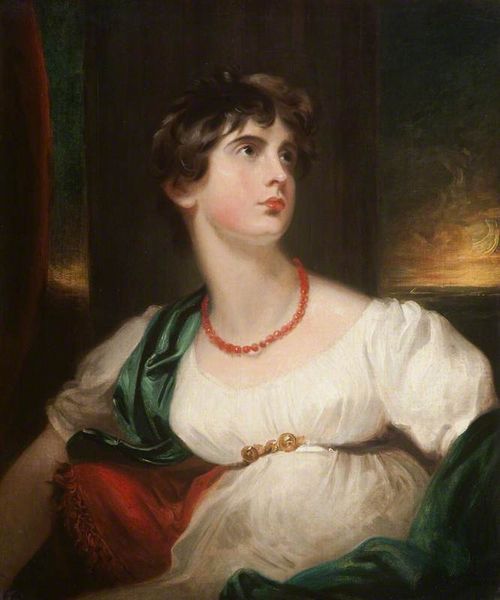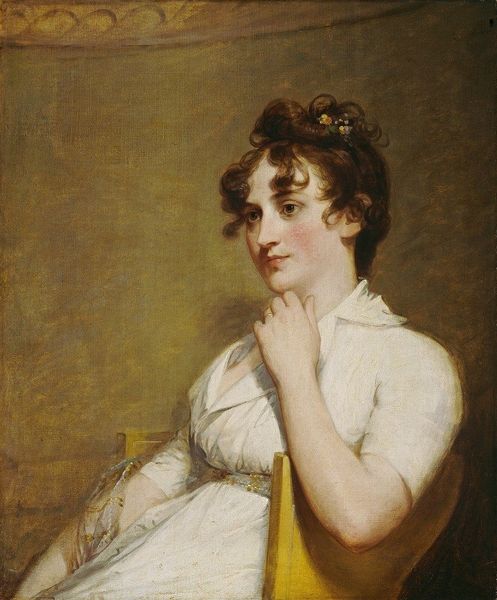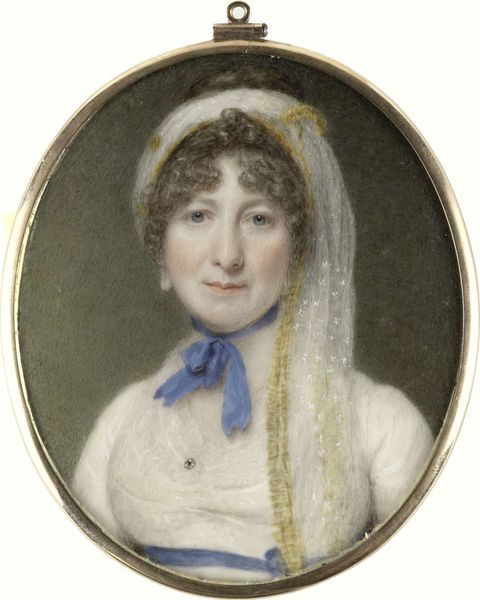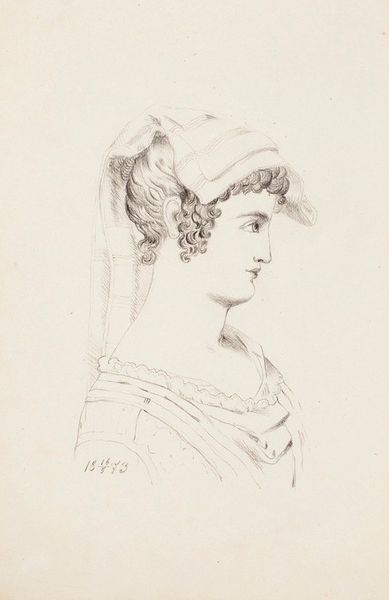
painting, oil-paint
#
portrait
#
painting
#
oil-paint
#
romanticism
#
history-painting
#
academic-art
#
lady
#
portrait art
#
fine art portrait
Copyright: Public domain
Editor: This is Thomas Lawrence’s "Maria, Lady Callcott," painted in 1819 using oil paint. It’s striking how unfinished it looks, especially in the lower portion of the painting. What compositional elements stand out to you? Curator: The chromatic restraint immediately commands attention. Notice the subdued palette – a near-monochrome, punctuated only by delicate hints of rose in the sitter’s cheeks and lips. This limited palette allows the artist to explore tonal relationships, and subtle variations in value within the whites and greys. Note, too, the texture—the impasto of the turban contrasting with the smooth finish of the face. Editor: Yes, that’s a fantastic point. The texture definitely adds another layer. So, it is the treatment of the surface itself rather than any narrative that we should focus on here? Curator: Precisely. Forget the sitter’s identity momentarily and examine the construction. Lawrence masterfully balances areas of high finish with passages left intentionally raw. Look closely at the rendering of the turban. The folds are articulated with gestural brushstrokes, conveying form through light and shadow alone. Editor: It's amazing how much form is suggested with so little explicit detail. The asymmetry of the composition is also noticeable—her face isn't perfectly centered, drawing the eye across the canvas. Curator: Indeed, asymmetry is key. Observe how her gaze directs us outwards and to the left, disrupting the symmetry one might expect in a portrait. Now, consider what would happen if this element was taken away and explore the painting without that critical arrangement. What differences would you find? Editor: That's a compelling perspective. By focusing on Lawrence's compositional choices and painterly techniques, we gain a greater appreciation for the artwork. Curator: We learn that even a seemingly incomplete work reveals volumes about the artist's intentions and the visual language they employ.
Comments
No comments
Be the first to comment and join the conversation on the ultimate creative platform.
